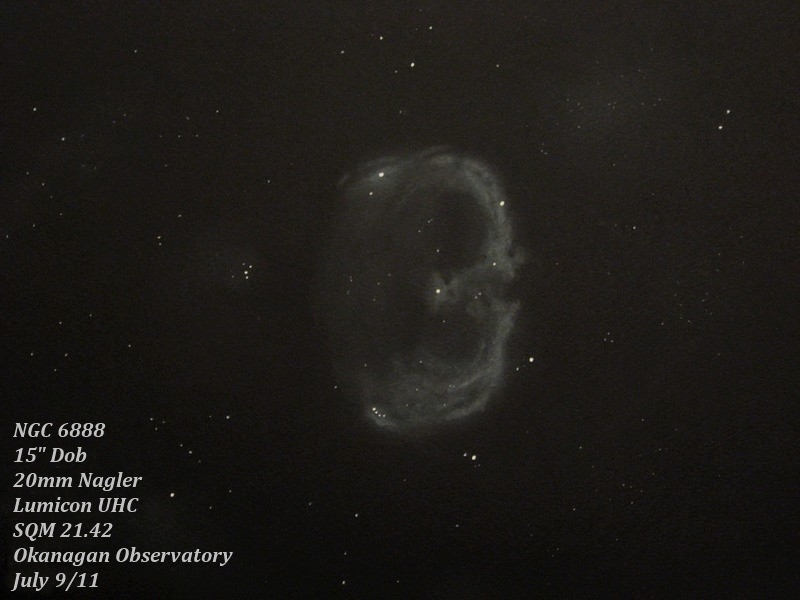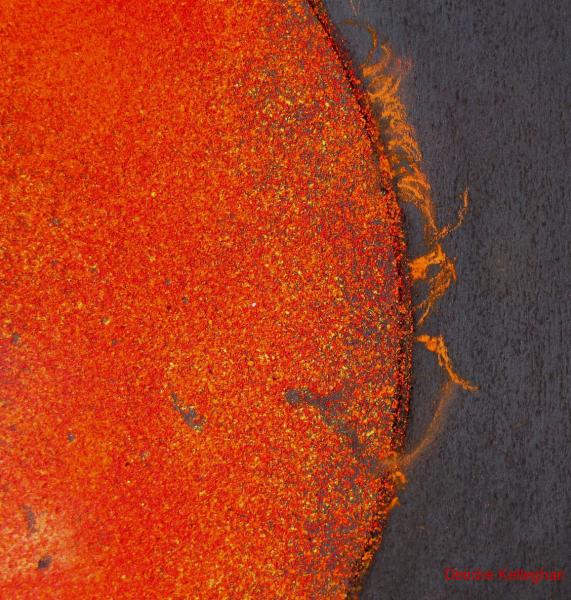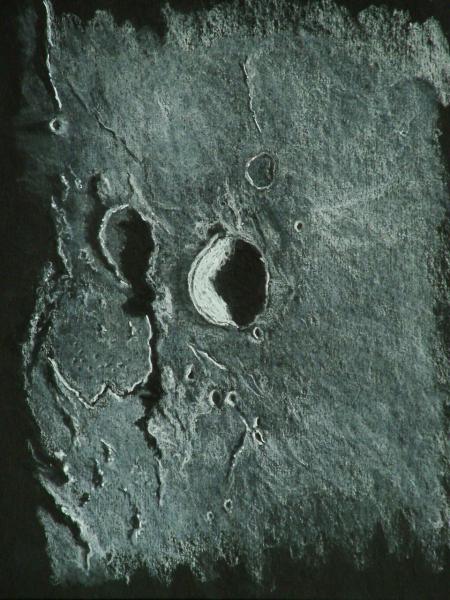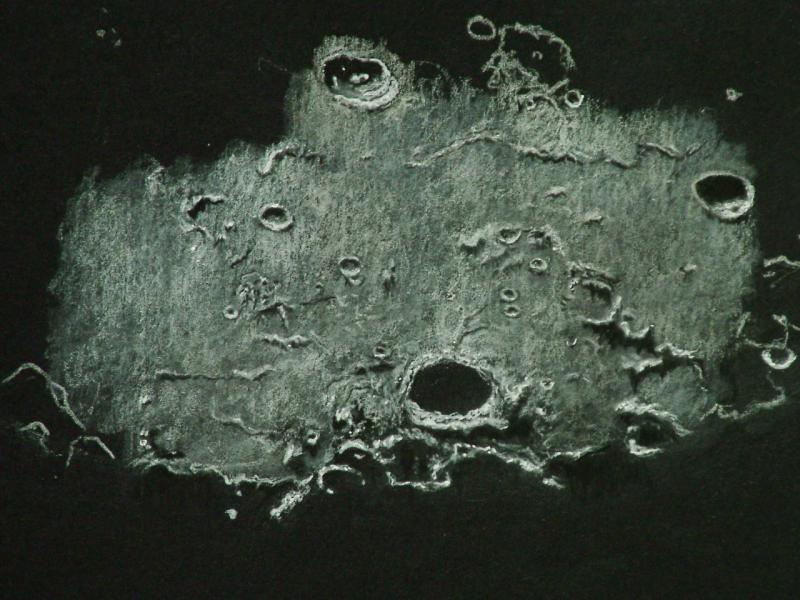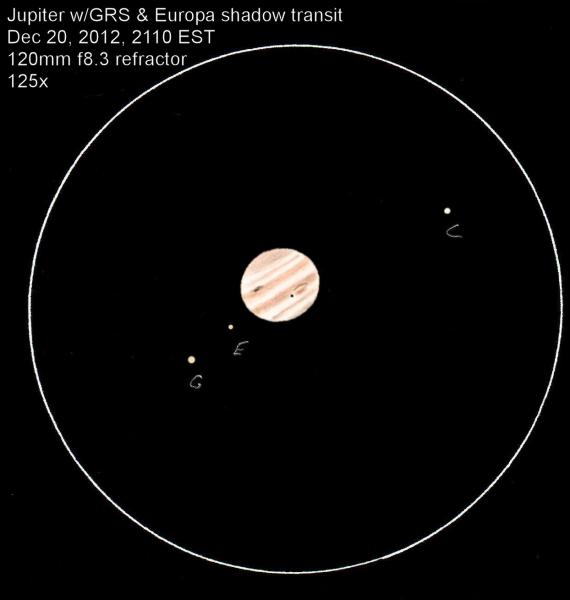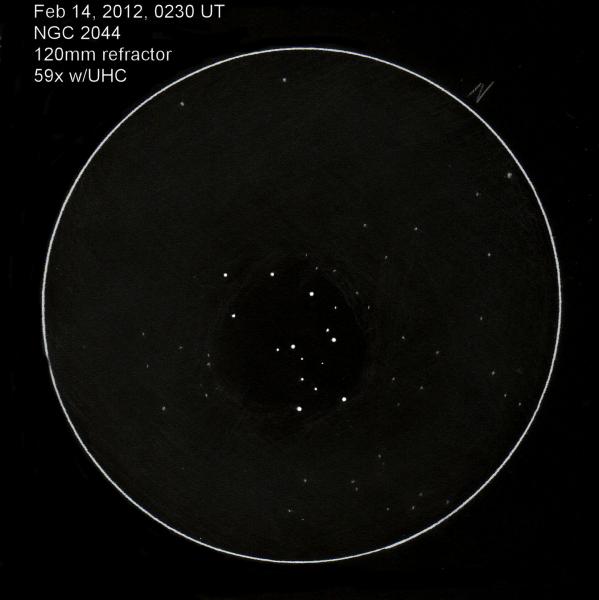This gallery is from the Inaugural RASC Astroketchers' Contest.
John Karlsson, NGC 6888
This is a sketch using pastel chalks, white charcoal pencil and a wight gel pen on black pastel paper. I did this sketch in the cold late night of last summer. The sky's where very clear and the temperature had dropped to +2C. Cold considering it was +30 that afternoon. The pastel is brushed onto the paper and then smudged in with a blending stump.darker areas are added with a kneed able eraser. Stars are done with the gel pen as well as the white charcoal pencil.
This is a really neat nebula to see with a large instrument from a dark location using some decent equipment. I made the sketch the next day from the field sketch that I did at the eyepiece. It is very hard to work with chalk and pastels in the dark as well as a cool damp environment. So I do a good copy of the sketch the next day in a more controlled area. This is a nice alternative to inverting them in the computer. I did add the sketch info once in the computer before e-mailing it.
Deirdre Kelleghan, Sun in Hydrogen-α
First solar observation of 2012. Yes the main Active Region that morning looked very detailed, but the hedge proms on the east limb were outstanding, and very busy indeed. A long rope like filament arched upward above the chromosphere, whipped round the limb becoming that very dramatic feature the filaprom.
- East limb prominences
- 2012 January 12, 10:50–11:20 UT
- PST 40, 8mm TVP eyepiece (50X)
- Seeing good
- Pastel and Conte on black paper
- Sketch is 9 x 4 inches on A4
- Bray, Co Wicklow Ireland
Alexander Massey, Aristarchus, Herodotus et Vallis Schroteri WINNER!
This sketch is of one of the brightest features on the Moon, the crater Aristarchus. The brilliantly illuminated internal western wall requires time to spy out the many fine details within it, otherwise these features would be washed out. A myriad of riles radiate out from this crater.
Wedged between Aristarchus and the terminator is the crater Herodotus. Its incompletely illuminated eastern wall seems to extend out to form one end of the serpentine valley Vallis Schröteri. This meandering valley sees the highlighted valley wall bounce around from side to side with the change in direction of the meander.
Again I chanced upon very stable conditions to be able to see such fine detail. This is one of my favourite sketches I’ve done.
Please enjoy.
- Object: Craters Aristarchus, Herodotus & Vallis Schröteri
- Scope: Celestron C5, 5” SCT
- Gear: 5mm Hyperion, 250X
- Date: 2012 February 4
- Location: Sydney, Australia
- Media: White pastel, black charcoal & white ink on A5 size black paper
- Time: 2 hours
Alexander Massey, Hercules and Surrounds
I’m throwing my hat into the ring with this sketch of the crater Hercules and surrounds. An average night’s start ended with quite stable conditions to be able to see very fine details. A multitude of fine riles, escarpments and stunning long shadows along the terminator was a dramatic scene I could not resist.
The setting Sun had the rugged moonscape of Hercules at its dramatic best. The crater walls are stepped, jagged and craggy. Highlights contrast with the depths of black shadows. The challenge was to lay down a faithful representation of this impressive scene.
I hope you enjoy it.
- Object: Crater Hercules and surrounds
- Telescope: Celestron C5, 5” SCT
- Gear: 5mm Hyperion, 250X
- Date: 2012 February 11
- Location: Sydney, Australia
- Media: White pastel, black charcoal and white ink on A4 size black paper.
- Time: 2 hours
Gordon Webster, Jupiter Europa Shadow Transit WINNER!
This sketch was done at the eyepiece then cleaned up and inverted using Corel Paint Shop Pro. The colour was added using coloured pencils.
- Date: 2012 December 20, 21:10 UT
- Scope: 120mm f/8.3 refractor (125x)
Gordon Webster, NGC 2244
This sketch was done at the eyepiece then cleaned up and inverted using Corel Paint Shop Pro.
- Date: 2012 February 14, 02:30 UT
- Scope: 120mm f/8.3 refractor (59x)
- Filter: UHC
- Log in to post comments

